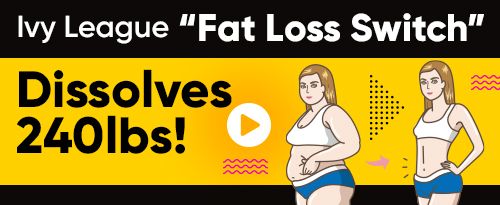Fruits and vegetables are the most powerful foods you can put on your plate. They fuel energy, strengthen immunity, protect against chronic disease, and keep the brain sharp. Every bite delivers essential vitamins, minerals, fiber, and antioxidants that fight inflammation, support digestion, and nourish every cell in the body. Yet, despite their life-extending benefits, many struggle to eat enough of them.
The problem goes beyond awareness—it’s habit. Most diets are built around processed, convenience-based foods that leave the body undernourished and craving real nutrients. Eating more fruits and vegetables does not require drastic changes. With a few simple adjustments, you can flood your body with the nutrients it craves while actually enjoying the process.
1. Start the Day with Plants
Your first meal sets the tone for digestion, energy levels, and blood sugar stability.
Smoothies: Add spinach, kale, frozen cauliflower, or avocado.
Oatmeal or Yogurt: Top with fresh berries, grated apple, or mashed banana.
Egg-Based Breakfasts: Load omelets with mushrooms, bell peppers, onions, or leafy greens.
Avocado Toast: Add tomatoes, radishes, or microgreens for a nutrient boost.
A plant-packed breakfast stabilizes blood sugar, improves digestion, and fuels the body for sustained energy.
2. Make Vegetables the Star of Your Plate
Instead of treating vegetables as an afterthought, make them the foundation of your meals.
Swap traditional sides: Replace rice with cauliflower rice, pasta with zucchini noodles, or fries with roasted carrots.
Try plant-forward meals: Stir-fries, stuffed bell peppers, and roasted veggie bowls take center stage.
Upgrade soups and sauces: Blend carrots, squash, or leafy greens into pasta sauces, stews, and pureed soups.
When vegetables become the main event, increasing intake happens effortlessly.
3. Reinvent Snacking with Whole Foods
Most snacks lead to energy crashes. Opt for nutrient-dense, fiber-rich alternatives instead.
Raw veggies with dips: Cucumber, carrots, bell peppers, and celery with hummus or guacamole.
Nut butter with fruit: Apples, pears, or bananas with almond or peanut butter.
Roasted chickpeas or kale chips: Crunchy, salty, and loaded with fiber.
Frozen fruit treats: Freeze grapes, mango chunks, or banana slices for a refreshing, natural snack.
Keeping these on hand makes reaching for real food easier than grabbing processed snacks.
4. Drink Your Fruits and Vegetables
Drinking produce can be an easy way to boost intake.
Cold-pressed juices: Fresh vegetable juices deliver concentrated vitamins and minerals.
Green smoothies: Blend greens, fruits, and a healthy fat like avocado or flaxseeds for balance.
Infused water: Add citrus slices, berries, cucumbers, or mint to make water more appealing.
While juicing removes fiber, it can still be a great way to supplement a plant-rich diet when paired with whole fruits and vegetables.
5. Double the Produce in Every Recipe
A simple trick for eating more plants is increasing their quantity in meals you already enjoy.
Add extra greens: Throw spinach or kale into pasta dishes, rice bowls, or sandwiches.
Boost casseroles and stir-fries: Load up with mushrooms, peppers, zucchini, or shredded carrots.
Mix veggies into protein dishes: Add chopped onions, bell peppers, or mushrooms into ground meat meals like burgers, tacos, or meatloaf.
By doubling up on produce, you increase nutrients without changing what you eat entirely.
6. Use Frozen and Canned Options for Convenience
Fresh produce isn’t always accessible, but that doesn’t mean nutrition has to suffer.
Frozen berries, spinach, and mixed veggies work well in smoothies, soups, and stir-fries.
Canned beans, tomatoes, and pumpkin puree make quick, nutrient-packed meals.
Pre-chopped frozen stir-fry mixes save prep time while keeping meals balanced.
Having these on hand eliminates the excuse of running out of fresh produce.
7. Upgrade Baked Goods with Fruits and Vegetables
Baking doesn’t have to mean empty calories. Adding produce enhances nutrition while keeping flavors rich.
Shredded zucchini or carrots add moisture and fiber to muffins or bread.
Mashed bananas, sweet potatoes, or applesauce replace sugar or butter in recipes.
Pumpkin or beet puree adds richness and antioxidants to baked goods.
A simple swap can make treats more nourishing while keeping them delicious.
8. Optimize Gut Health with Fiber and Enzymes
A thriving gut microbiome depends on plant-based fiber and natural enzymes.
Fiber feeds beneficial gut bacteria, strengthening the immune system, reducing inflammation, and improving digestion.
Prebiotic-rich foods like onions, garlic, and asparagus support a healthy microbiome.
Raw fruits and vegetables contain enzymes (like bromelain in pineapple and papain in papaya) that aid digestion.
Eating a variety of fiber-rich and enzyme-containing plants enhances nutrient absorption and gut health.
9. Eat Seasonally for Maximum Nutrition
Fruits and vegetables are most nutrient-dense when eaten in season. Seasonal eating:
Provides higher levels of vitamins, minerals, and antioxidants.
Supports the body’s natural cycles (hydrating fruits in summer, warming root vegetables in winter).
Reduces exposure to pesticides and chemicals found in out-of-season produce.
Shopping at farmers’ markets and prioritizing local, seasonal produce ensures better nutrition and taste.
10. Important Reminder: Reduce Pesticide Exposure for Better Health
Conventionally grown produce often contains pesticides that disrupt hormones and gut bacteria.
Prioritize organic for high-pesticide foods (apples, strawberries, spinach).
Wash non-organic produce with a vinegar-water solution to remove residues.
Opt for the Clean Fifteen (low-pesticide options like avocados, onions, sweet corn).
Eating clean, unprocessed food is just as important as eating more of it.
The Smallest Changes Bring the Biggest Impact
Waiting for motivation or the “perfect time” to start eating healthier is a trap. The body is already working every second to keep you strong and resilient—what you feed it either helps or hinders that process. Every added serving of fruits and vegetables is a step toward better energy, clearer thinking, improved digestion, and long-term health.
Don’t overcomplicate it. Start with one extra serving a day, swap out processed foods where you can, and build from there. The smallest, most consistent changes create the biggest impact over time.
Your body is built for strength, longevity, and vitality. Fuel it with what it needs, and it will reward you with energy, resilience, and health that lasts a lifetime.






